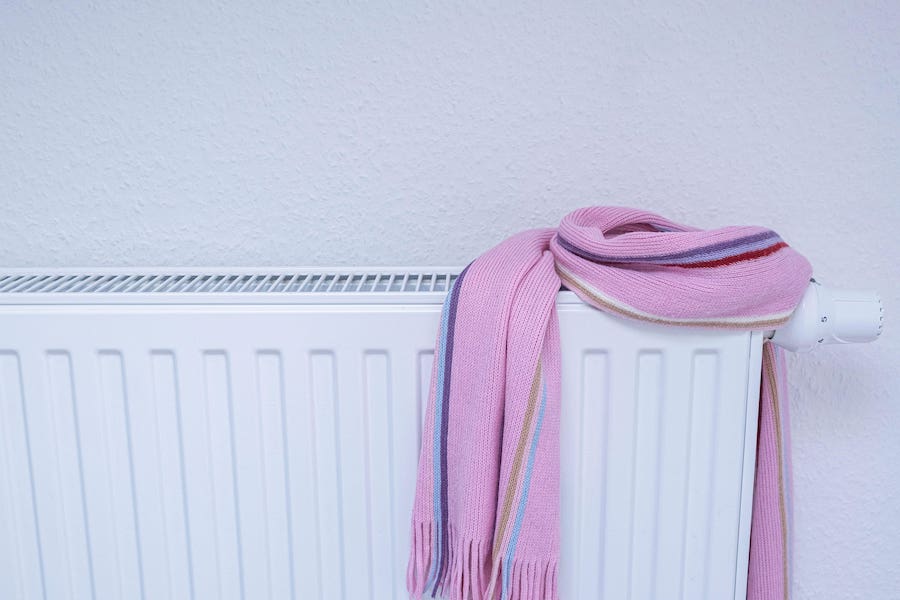How to bleed your radiators – and why it’s important
Because central heating is the heart of the home when there’s a chill in the air
With a change in seasons, cue the central heating – and the burning question: Are your rads ready to fire up?
And most importantly, are they warm to the touch without any cold spots when you run your hands along them? It’s the uncertainty over whether they need bleeding, which can impact the efficiency of your heating system.
“Bleeding your radiators is important because when they are working inefficiently, they can drive up the cost of your energy bills,” says Ian Palmer-Smith, appliance expert at Domestic & General.

Check both the tops and bottoms of your radiators for cold spots
If your radiator feels cold at the top and hot at the bottom, he says this means there is trapped air inside, preventing hot water from circulating, and subsequently needs bleeding.
As well as trapped air, a noisy radiator making gurgling and banging noises can also be a tell-tale sign, warns Palmer-Smith. “And you should bleed your radiators at least once a year, as part of standard maintenance.”
Andrei Carcu, electrician expert and manager at London Electricians 24/7, says the best time to do this is in the autumn when the air outside is starting to feel chillier – and calling out for a jumper.
“This way, you can ensure that your radiator is working efficiently and you won’t be left shivering in the cold winter months.”

Carry out maintenance before the cold weather sets in
“Regularly bleeding radiators expands their lifespan as there is less strain on your heating system,” advises Carcu. “A healthier heating system also means fewer repair issues in the future, potentially saving you hundreds of pounds down the line.”
How to bleed your radiator
You will need a radiator key, a bowl to catch the water, and a cloth to clean up any spills…

Radiator keys are available at most DIY shops
Turn off the central heating
Firstly, you need to turn off your central heating, as you can’t bleed a radiator with it on, notes Palmer-Smith. “Not to mention the radiator could be really hot and cause hot water to spurt out!”
Release the air
“Ensure a cloth is placed below the valve to catch any water that may be released,” says Palmer-Smith. “Take your radiator key and insert it into the valve, then turn it anti-clockwise. “As you do this, you should hear a hissing sound which is the air leaving the radiator.”
Use the cloth to clear up any excess water that comes out…

Keep a cloth handy to catch any spills when bleeding radiators
Close the valve
“As soon as the sound stops coming from the radiator, you will need to tighten the valve back up.” He continues: “You can then put your central heating on and feel the warmth coming from your radiator.”
You’ll then need to check the pressure on your boiler. If it’s too low you can put more water into the system, using a filling loop, says Palmer-Smith.
If your radiators are still not heating up properly, he says it’s likely you may need a boiler or radiator repair and should call out an expert.
The Press Association
Latest posts by The Press Association (see all)
- Actor Richard Chamberlain dies aged 90 - March 30, 2025
- 5 new books to read this week - March 26, 2025
- 6 things a physio wishes people over 60 would stop doing - March 25, 2025
- NHS reminder to 7.5m people as Covid-19 jab booking system opens - March 25, 2025
- The truth about cholesterol – what you need to know - March 25, 2025




















